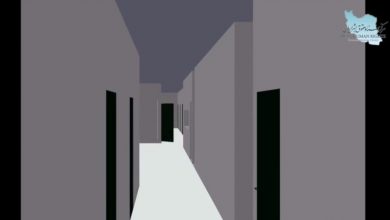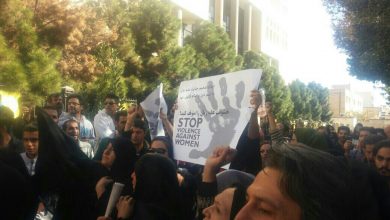English Translation of Regulatory Code on Sentences of Qisas, Stoning, Crucifixion, Execution, and Flogging
Regulatory Code on Sentences of Qisas, Stoning, Crucifixion, Execution, and Flogging [adopted 19 September 1999]
Regulatory Code on Sentences of Qisas, Stoning, Crucifixion, Execution, and Flogging pursuant to Article 293 of the Criminal Code of Procedure for Public and Revolutionary Courts on Stoning, Crucifixion, Execution, and Flogging
Chapter I: Enforcement of Sentences Resulting in Termination of Human Life
Section One
Conditions of Enforcement
Article 1- Subsequent to finalization of the judgment and its formal communication to the convicted person and the legal counsel representing the convicted person, the court of first instance that issued the sentence is tasked with the responsibility of forwarding a certified copy of the final judgment along with a memorandum containing specific instructions and documents pertaining to the execution of the sentence to the judicial authority in charge of enforcing the sentence.
Note: The term “judicial authority in charge of enforcing the sentence” refers to the Division of Enforcement of Criminal Sentences, which functions under the supervision of the prosecutor or his or her deputy. In sectors where there is no prosecutor’s office, the head of the judicial district or his or her deputy acts as the supervisor.
Article 2- Subsequent to its finalization by the court of first instance, and after the process of seeking the Guardian of the Muslims’ [the Supreme Leader’s] authorization and its final endorsement by the head of the judiciary, a sentence of qisas-i nafs[1] will be enforced in accordance to the wishes of the next-of-kin or extended relatives.
Article 3- When a judicial authority, based on legal grounds, appeals the final decision, enforcement of the sentence will be suspended until the issuance of the final and binding sentence.
Article 4- With the exclusion of qisas, if the convict who is sentenced to execution, stoning, crucifixion, or amputation under the law of hadd[2], submits a request for pardon subsequent to the finalization of the sentence and before the sentence is carried out, the court issuing the sentence will rule to suspend the enforcement until the decision of the Amnesty and Pardon Commission is issued. The said Commission must review the request expeditiously and inform the court of its decision promptly thereafter.
Article 5- The emergence of insanity, apostasy, illness, or menstruation of the convict is not considered grounds for staying the enforcement of hadd, qisas, or execution. However, with respect to an ill convict, per the assessment and recommendation of the medical examiner or a trusted physician, and subject to the approval of the judge in charge of issuing the sentence in the court of first instance or the prosecutor in charge of the case, should the convict’s condition render him or her unfit to stand proceedings as set in this code, enforcement of the sentence will be delayed until such time that the condition is resolved.
Article 6- During pregnancy or postpartum hemorrhage, sentences of execution, hadd, or qisas are not enforced. Furthermore, after giving birth, per the assessment and recommendation of the medical examiner or a trusted physician, and subject to the approval of the judge in charge of issuing the sentence, or the prosecutor in charge of the case, should the enforcement of the sentence compromise the health of the newborn due to loss of mother’s milk, enforcement of the sentence will be delayed until the child reaches the age of two.
Section Two
Enforcement Protocol
Article 7- Subsequent to receiving the final judgment and issuance of the enforcement order from the court, and at least 48 hours prior to enforcing the sentence, the judicial authority in charge of enforcement is responsible to communicate all relevant details to the following authorities and notify them to appear at the location of enforcement to carry out their respective duties:
- The judge of the court of first instance who issued the verdict, where his or her presence is required by law;
- The head of the Prisons Department [the local branch of the Prisons Organization], or his or her deputy, for preparing the conditions for enforcement of the sentence, maintaining sentence inside the prison, and/or collaborating with the police, and/or handing over the prisoner if the enforcement is to be carried out outside the prison facility;
- The commander of the local police force or his or her deputy;
- The medical examiner, or a trusted physician (where there is no medical examiner’s office), for the purpose of examining the convict, issuing a report regarding his or her physical condition prior to enforcement, and examination of the body thereafter;
- A cleric or an enlightened person to conduct the religious rites, and if the convict is a follower of one of the officially recognized religions, a representative of the leader from the related religion or his or her representative. Either way, absence of such representation is not an impediment to the enforcement of the sentence.
- The court clerk, to read the sentence prior to enforcement;
- The victim’s next-of-kin or their legal representative;
- The convicted person’s legal representative. The absence of legal representation is not an impediment to the enforcement of the sentence.
- Witnesses, if required by law.
Note 1: When, for any reason determined by the prosecutor, the presence of observers or a special group is not recommended at the site of the enforcement, police will obstruct their entrance to the area. Where there is no prosecutor’s office, such determination is left to the head of the judiciary in that district.
Note 2: The police have the responsibility to secure the location outside the prison area chosen for enforcing the sentence.
Article 8- Prior to enforcing the sentence, the medical examiner, or a trusted physician, in company of the judge in charge of supervising the enforcement must go to where the convict is being held to examine him or her and to issue a medical opinion. If there is no physical impediment to enforcing of the sentence, the judge will inform the convict that he or she should indicate if there are persons he or she wishes to visit. When the convict requests such a visit, so long as the request does not delay the enforcement, those individuals will be asked to come to the place where the convict is being held.
Article 9- Upon arrival of noted visitor(s), the head of the prison, or his deputy, will arrange for a visit with the convict. The convict has the right to communicate, verbally or in writing, anything he or she wishes with the visitor(s), in the presence or absence of the judicial authority in charge of enforcing the sentence. Only the head of the prison, or his or her deputy, must be privy to such communications. If needed, a translator will be used.
Article 10- The cleric or the enlightened person is tasked with:
– Advising the convict to repent;
– Soliciting the convict for his or her will;
– Advising the convict as to the laws concerning washing of his or her body after death, application of perfume, and shrouding in regards with Qisas and stoning.
Note 1: The judicial authority in charge of enforcing the sentence is tasked with supervision of the above procedures and, when necessary, carrying out the noted procedures.
Note 2: When circumstances allow, prison authorities and/or police will allow the convict to bathe with ziziphus extract, camphor or pure water. Then, in accordance with religious laws regarding the dead, he or she may shroud him or herself in three pieces of fabric and apply perfume. Once this is done, there is no need to wash and shroud the body of the person stoned or executed after the sentence has been enforced. With the body in the way it is [following the execution], the prayer for the dead can be recited and the body can be buried in a Muslim cemetery. If the convict was not washed before the enforcement of the sentence, washing and other procedures concerning burial will be done subsequent to the enforcement of the sentence.
Note 3: If the convict has a will, the said authorities, following the enforcement of the sentence and after an inspection and approval by the judicial authority in charge of enforcing the sentence, will deliver the will to its destination as directed by the convict and without any delay.
Note 4: The costs of enforcing the sentence are to be incurred by the judiciary pursuant to the provisions of this article and its notes.
Article 11- If the convict is a non-Muslim, the procedures prior to the enforcement will be carried out in accordance with his or her religious rites. The absence of the religious leader or representative is not an impediment to enforcing the sentence.
Article 12- Should the convict request food or drink, the authorities in charge are tasked with fulfilling his or her request, so long as such a request does not cause any delay in enforcing the sentence. The decision rests with the judicial authority in charge of the enforcement.
Article 13- When the convict is in a prison and the sentence is to be carried out outside the prison area, a record will be drafted and it will be signed by the authority in charge of the enforcement, the head of the prison or his or her deputy, the physician present at the location, the court registrar, and the local police commander or his deputy. The head of the prison will verify the identity of the prisoner, compare the information with court documents, and sign the document.
Section Three
Enforcement Procedure
Article 14- Enforcement of qisas-i nafs and execution can be carried out by hanging on the gallows, firing of a gun, electrocution, or any other method determined by the judge.
Note: In the absence of specific instructions as to the method of execution the convict will be hanged.
Article 15- Enforcement will be carried out at the break of dawn, unless otherwise specified by the court, and the enforcement is carried out by the prison or disciplinary authorities. With respect to qisas, the next-of-kin has the right to carry out the sentence personally or to appoint a representative to do so on their behalf.
Article 16- Prior to enforcement, the authorities in charge are to test and examine the apparatus and devices set to be used for carrying out the sentence to ensure their proper strength and readiness for enforcing the sentence. The said apparatus and devices should not subject the convict to torture, agony or mutilation in excess of what is required by the sentence. In addition, the process of enforcement should be conducted by experts with utmost calm and without aggression.
Article 17- The authority in charge of enforcing the sentence is tasked with supervising the enforcement of the sentence to ensure proper implementation of the sentence in accordance with the set protocol, without delay, interruption or cessation. After performing the set protocol and noted conditions, the convict is to be transferred, in custody of the authorities, to the enforcement venue, whereby, with the permission of the authority in charge, the court clerk will read out the sentence, immediately after which, by the order of the authority in charge, the sentence will be carried out.
Note: If prior to the enforcement, the convict sentenced to execution or stoning denies the allegations, and if Article 71 of the Islamic Penal Code applies to him or her, the authority in charge of the enforcement must stop the process and report the issue to the judicial authority that issued the verdict.
Article 18- After enforcement, and once the medical examiner or the trusted physician pronounces the convict dead, the venue of enforcement must be vacated and the body trusted to the medical examiner’s office. If the body is claimed by the relatives, the authority in charge of the enforcement has the discretion to order such a transfer. Otherwise, the body will be buried in accordance with shari’a law and applicable regulations. In the latter case, all costs will be incurred by the public treasury.
Article 19- A written report of the proceedings will be produced and signed by the head of the prison or his or her representative and the police commander or his or her deputy. Where enforcement is carried out outside the prison facility, the medical examiner or a trusted physician, the court clerk, next-of-kin or a representative, and the convicted person’s legal counsel (if present) will sign the record which will be kept on file.
Article 20- When deemed necessary by the judicial authority in charge of the enforcement, the proceedings will be documented by film or photographs to be archived, and the news of the enforcement, including the charges and a summary of the verdict, will be published in print media. In special circumstances, where the judiciary or the relevant authorities deem fit, the picture of the convict during enforcement will be published for public information.
Section Four
Special Protocol for Enforcement of Stoning Under Hadd
Article 21- With discretion of the judge, prior to the enforcement, the authority in charge of the enforcement will publicize the time at which the sentence will be enforced. Under all circumstances, it is required that at least three believers to be present at the time the hadd is being enforced.
Article 22- Police officers or prison authorities, as the circumstances may require, are tasked with the preparation, in advance, of the location at which hadd will be enforced, excavation of a hole in accordance with the standards set forth in Article 102 of the Islamic Penal Code, and placing a sufficient number of rocks, in sizes specified in Article 104 of said code. The judge in charge of the enforcement will inspect the above arrangement in advance of approving the enforcement of the sentence.
Article 23- When the sentence of stoning is a result of the convict’s own admission [to the crime], at the time of the enforcement, the judge who issued the verdict will cast the first stone, followed by others. If, however, the sentence is a result of testimony of witnesses, the said witnesses will first cast the stones, followed by the judge.
Note 1: The term “judge who issued the verdict” refers to the judge at the court of first instance who issued the verdict, unless the Supreme Court Discernment Branch[3] invalidates the original verdict and amends the sentence to stoning. In this case the first stone will be cast by the head of said branch or a by a member of said branch appointed by the head of the branch.
Note 2: Absence of the judge and/or witnesses, or their nonparticipation, is not an impediment to enforcement of hadd, and the sentence will be carried out by the order of the judicial authority in charge of the enforcement. When adultery committed by the convict is proven through the testimony of witnesses, and such witnesses flee from the scene at the time of the enforcement, or where the commission of adultery is proven by admission of the convict and he or she manages to escape from the hole, the enforcement of hadd will be terminated, and the judicial authority in charge of enforcement will issue the order to stop the enforcement. When Article 71 of the Islamic Penal Code (1991) applies, the procedure will be carried out according to the note of Article 17 of this regulatory code.
Section Five
Special Protocol for Enforcement of Crucifixion under Hadd
Article 24- In enforcing crucifixion, the convict will be tied with his or her back against a crucifix facing the Qebleh[4], with feet slightly above the ground in a vertical position. The convict will be left in such a state for three days, supervised by the police. After the passage of three days, the convict is brought down from the gallows. If the convict is dead, he or she will be buried pursuant to religious rites and in accordance with the laws of burial. Otherwise, he or she is freed. If needed, it is permissible to provide medical attention.
Note: If the crucified person is found to be dead before three days have passed, the body may be brought down for religious rites and preparation for burial.
Chapter II – Enforcement of Sentences Requiring Amputation
Article 25- [Articles] 16, 18, 19 and 20 of this regulatory code are mandatory.
Article 26- The presence of a physician for assessment and enforcement of Articles 272, 275, 290, and 291 of the Islamic Penal Code is mandatory.
Chapter III – Enforcement of Sentences of Flogging
Article 27- Flogging will be administered by a woven leather belt of approximately one meter in length and one-and-a-half centimeter in width.
Article 28- To the extent possible, the convict’s hand and feet must be securely tied so as to avoid unwanted movements that would cause impact of the lash on other parts of the body.
Note: The term ‘other parts’ refers to the head, face and private organs.
Article 29- If enforcement is carried out indoors, the temperature of the room where flogging is administered should be moderate. If enforcement is carried out outdoors, the temperature should neither be too hot nor too cold. In cold climates, enforcement should be carried out during warmer hours, and in hot climates during cooler hours.
Article 30- With respect to strength used in flogging: flogging for adultery and tafkhiz[5] is more forceful than flogging for consumption of alcohol, and flogging for consumption of alcohol is more forceful than flogging for qazf[6] and pandering.
Article 31- Enforcement of flogging is subject to the provisions of Article 300 of the Criminal Code of Procedure for Public and Revolutionary Courts in accordance with the provisions of the Islamic Penal Code.
Article 32- Enforcement of hadd for female convicts will be carried out while the convict is in a sitting position with her body fully covered by clothing.
Article 33- Flogging for male convicts will be administered while the convict is in a standing position. For adultery, sodomy, and consumption of alcohol, there will be no clothing other than coverage of private organs, and for qazf or pandering, flogging will be administered over regular clothing.
Article 34- Floggings under the law of ta’zir[7] will be enforced pursuant to Article 288 of the Criminal Code of Procedure for Public and Revolutionary Courts as follows:
a) Flogging will be administered while the convict is lied down on his or her stomach, over regular clothing, to the back, avoiding head, face and private organs;
b) Flogging will be administered with steady pace and moderate strength;
Article 35- This regulatory code, in application of Article 293 of Criminal Code of Procedure for Public and Revolutionary Courts, adopted on 19 September 1999 by the Commission for Judicial and Legal Affairs of the Islamic Consultative Assembly, with 36 Articles and 7 Notes, was approved by the Head of the Judiciary.
Head of the Judiciary – Seyed Mahmoud Shahroudi
[1] The concept of Qisas is at the core of the Islamic justice system, and it gives the victim of an act that results in bodily injury the opportunity to exact retribution on the perpetrator. In murder cases, the right to exact retribution is afforded to the victim’s relatives, most commonly to the victim’s father. The term qisas-i nafs refers to instances where the family of a murdered victim requests the perpetrator’s execution.
[2] The Islamic Penal Code defines hadd as a punishment for which its cause, category, quantity and quality are determined by Shari’a law.
[3] An amendment to the Establishing Law of Public and Revolutionary Courts abolished Supreme Court Discernment Branches in 2006.
[5] Article 235 of the Islamic Penal Code defines tafkhiz as: “placing a man’s sex organ between the thighs or the buttocks of another man.” A proviso to Article 235 states that if penetration does not reach the point of circumcision, the sex act is considered to be tafkhiz.






